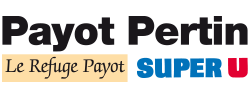Chamonix Mont-Blanc

The Community of Communes of the Chamonix Mont-Blanc Valley makes a major contribution, both financially and in terms of logistics, to this sporting event which has become a true world reference.
This race is organised in the nature, in an exceptional environment that we want to protect. To this end, the organisers of the UTMB, in conjunction with the local authorities, have implemented numerous measures to reduce the impact on the environment and pollution factors.
On a more general level, the Chamonix-Mont-Blanc valley takes a very proactive approach to environmental protection all year long.
Signatory of the first territorial climate energy plan in a mountain area, labelled as a positive energy territory for green growth (TEPOS and TEPCV), it has developed a specific air quality plan.
It has an active policy for the development of public transport with strong support for bus and train networks (at a cost of nearly €6M annually) and a decisive role in the modernisation of our railway line (more than €100M has been committed, including the budgetary provisions of the State-Region Plan Contract).
With regard to the energetic renovation of buildings, in addition to the renovation of public facilities, we have put in place, since 2015, a clear and accessible scheme, the Prime Energie Habitat (PEH), to help with renovation operations in private housing. The Prime Energie Habitat (PEH) complements the Fonds Air Bois (Wood Air Fund) set up in 2013 in the Arve Valley and aimed exclusively at replacing polluting heating appliances. The valley also offers the Gas Air Fund (in collaboration with GRDF), specific financial aid to encourage gas conversion, as well as the Company Air Fund to encourage craftsmen and companies to reduce their emissions by transforming their work tools.
At the same time, the local authority is investing in electric mobility (recharging stations, electric plugs in car parks, a municipal fleet that is partly electric) and in soft modes of transport (cycle lane being built, installation of cycle racks).
In the field of energy, the municipality has implemented the PlanETer platform, which guides inhabitants in their energy choices, and has launched two ambitious hydroelectric power plant projects in Taconnaz (operational since November 2019) and Les Favrands. A methanisation plant as well as a green multi-fuel station (GNV, hydrogen, electric charge) are also being studied.
All these commitments and achievements have a clear purpose: to enhance and protect our natural heritage and the inhabitants of the region!


